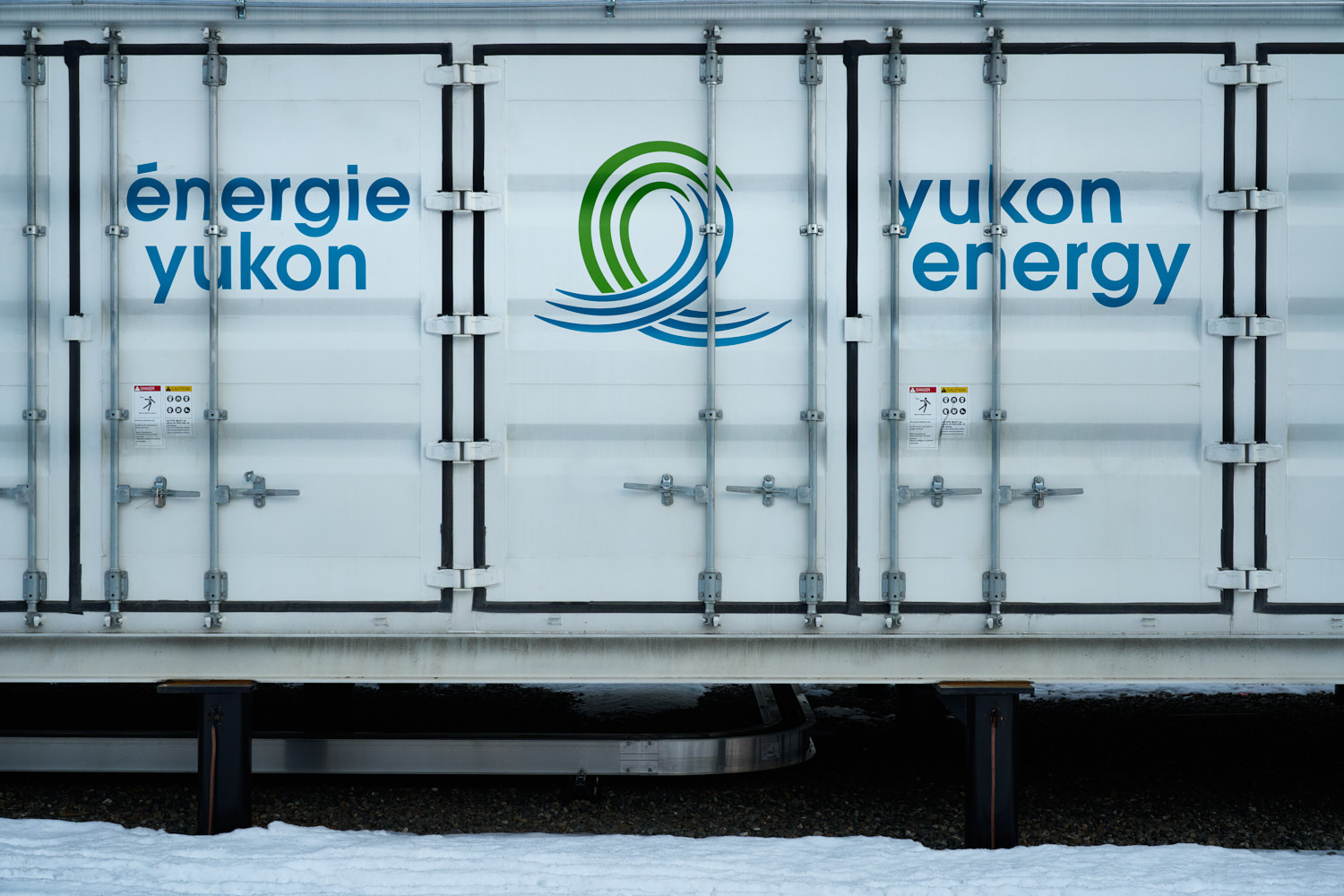- Electricity 101
- Projects and Facilities
- Dawson Diesel Replacement & Relocation Project
- Whitehorse Hydro Facility
- Aishihik Hydro Facility
- Mayo Generating Station Upgrades
- Mayo Hydro Facility
- Liquefied Natural Gas (LNG)
- Diesel Facilities
- Upratings and Refurbishments
- Solar
- Grid-Scale Battery Energy Storage System
- Atlin Hydro Expansion
- Repairs to the Boat Lock
- Whitehorse Thermal Permitting
- Dawson Voltage Conversion
- Faro Diesel Replacement Project
- Whitehorse Power Centres Project
- Whitehorse Diesel Replacement Project
- Energy Future
- Saving Energy
- Standing Offer Program
- Micro-Generation
Benefits of battery storage
On our isolated grid, one of the main challenges we face is meeting large demands for electricity (known as peak demands) during winter months, when water levels are low and customers need for electricity is high. That’s why we have liquefied natural gas (LNG) and diesel engine generators. We turn to them when there’s not enough renewable resources to generate the electricity Yukoners need.
With a new battery storage system on our grid, we can store extra electricity when there’s low demand for it and then use it when demand goes up.

Other benefits of the grid-scale battery storage system include the following:
- It’s a sustainable solution. The battery storage system uses renewable electricity to help meet peak demands for power.
- Restores power outages faster. By always being “on” the battery storage system serves as a quick and easy source of electricity that can be turned on at the flip of a switch in a power outage.
- Improves grid reliability. Using the battery storage system during sudden outages or an unexpected decrease in electricity demand helps ensure grid stability.
- Supports intermittent renewable sources. The battery storage system will help support the safe integration of new intermittent renewable sources like wind and solar.